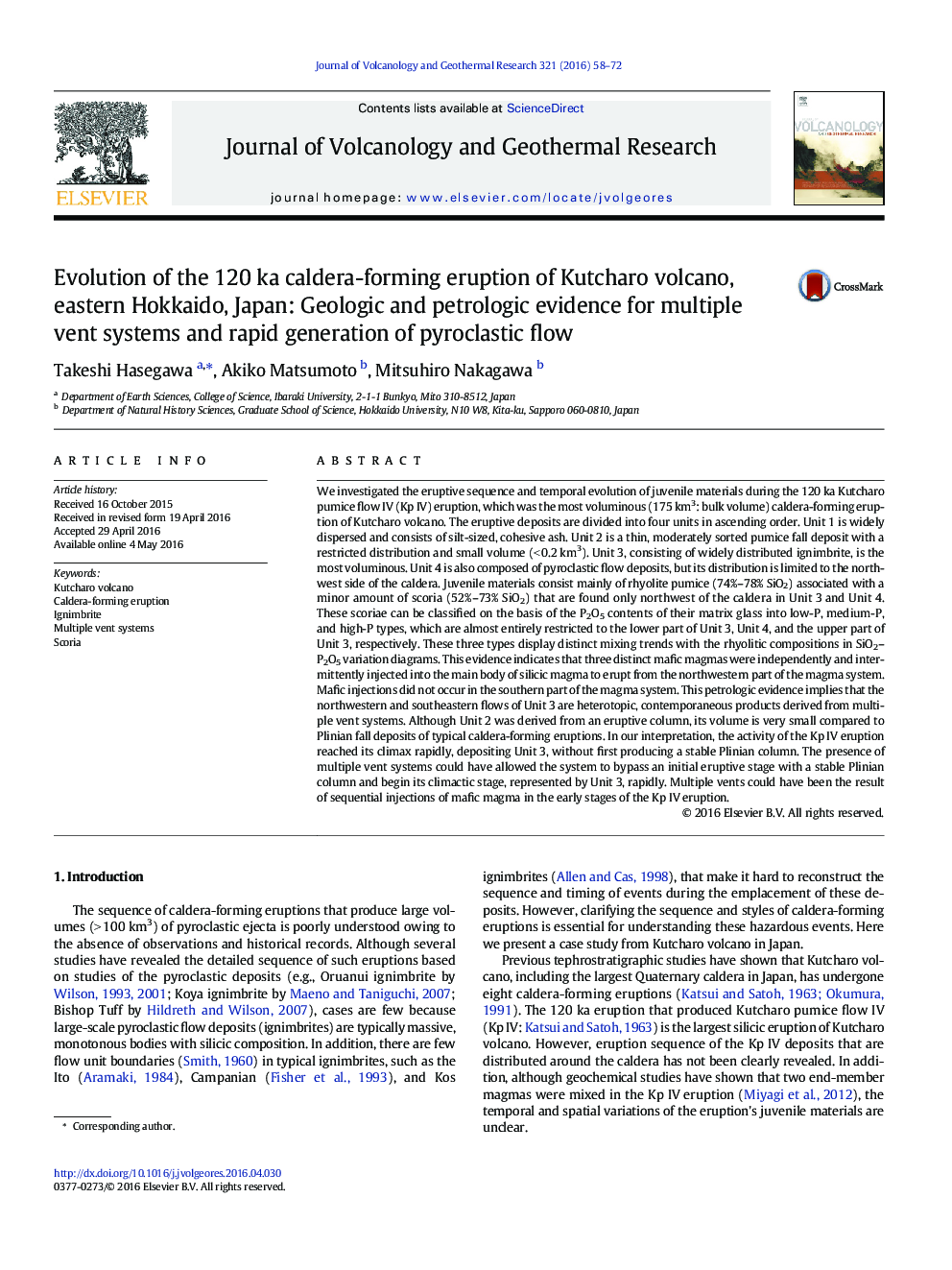| کد مقاله | کد نشریه | سال انتشار | مقاله انگلیسی | نسخه تمام متن |
|---|---|---|---|---|
| 4712963 | 1638301 | 2016 | 15 صفحه PDF | دانلود رایگان |

• A multiple vent system developed in the early stage of the Kp IV eruption
• The eruption rapidly reached its climax without developing a long-lived stable Plinian column.
• Three mafic magmas were injected into and discharged with rhyolites from the northwestern vent system.
We investigated the eruptive sequence and temporal evolution of juvenile materials during the 120 ka Kutcharo pumice flow IV (Kp IV) eruption, which was the most voluminous (175 km3: bulk volume) caldera-forming eruption of Kutcharo volcano. The eruptive deposits are divided into four units in ascending order. Unit 1 is widely dispersed and consists of silt-sized, cohesive ash. Unit 2 is a thin, moderately sorted pumice fall deposit with a restricted distribution and small volume (< 0.2 km3). Unit 3, consisting of widely distributed ignimbrite, is the most voluminous. Unit 4 is also composed of pyroclastic flow deposits, but its distribution is limited to the northwest side of the caldera. Juvenile materials consist mainly of rhyolite pumice (74%–78% SiO2) associated with a minor amount of scoria (52%–73% SiO2) that are found only northwest of the caldera in Unit 3 and Unit 4. These scoriae can be classified on the basis of the P2O5 contents of their matrix glass into low-P, medium-P, and high-P types, which are almost entirely restricted to the lower part of Unit 3, Unit 4, and the upper part of Unit 3, respectively. These three types display distinct mixing trends with the rhyolitic compositions in SiO2–P2O5 variation diagrams. This evidence indicates that three distinct mafic magmas were independently and intermittently injected into the main body of silicic magma to erupt from the northwestern part of the magma system. Mafic injections did not occur in the southern part of the magma system. This petrologic evidence implies that the northwestern and southeastern flows of Unit 3 are heterotopic, contemporaneous products derived from multiple vent systems. Although Unit 2 was derived from an eruptive column, its volume is very small compared to Plinian fall deposits of typical caldera-forming eruptions. In our interpretation, the activity of the Kp IV eruption reached its climax rapidly, depositing Unit 3, without first producing a stable Plinian column. The presence of multiple vent systems could have allowed the system to bypass an initial eruptive stage with a stable Plinian column and begin its climactic stage, represented by Unit 3, rapidly. Multiple vents could have been the result of sequential injections of mafic magma in the early stages of the Kp IV eruption.
Journal: Journal of Volcanology and Geothermal Research - Volume 321, 15 July 2016, Pages 58–72